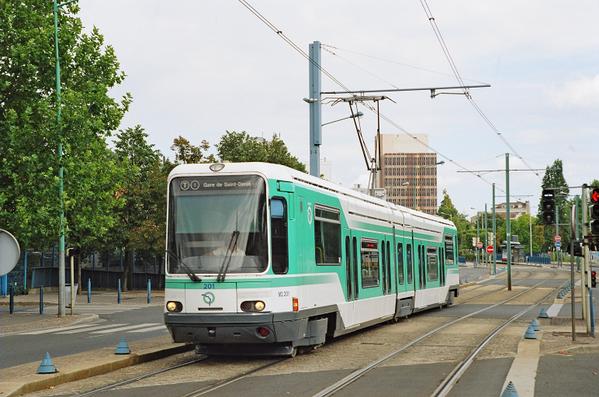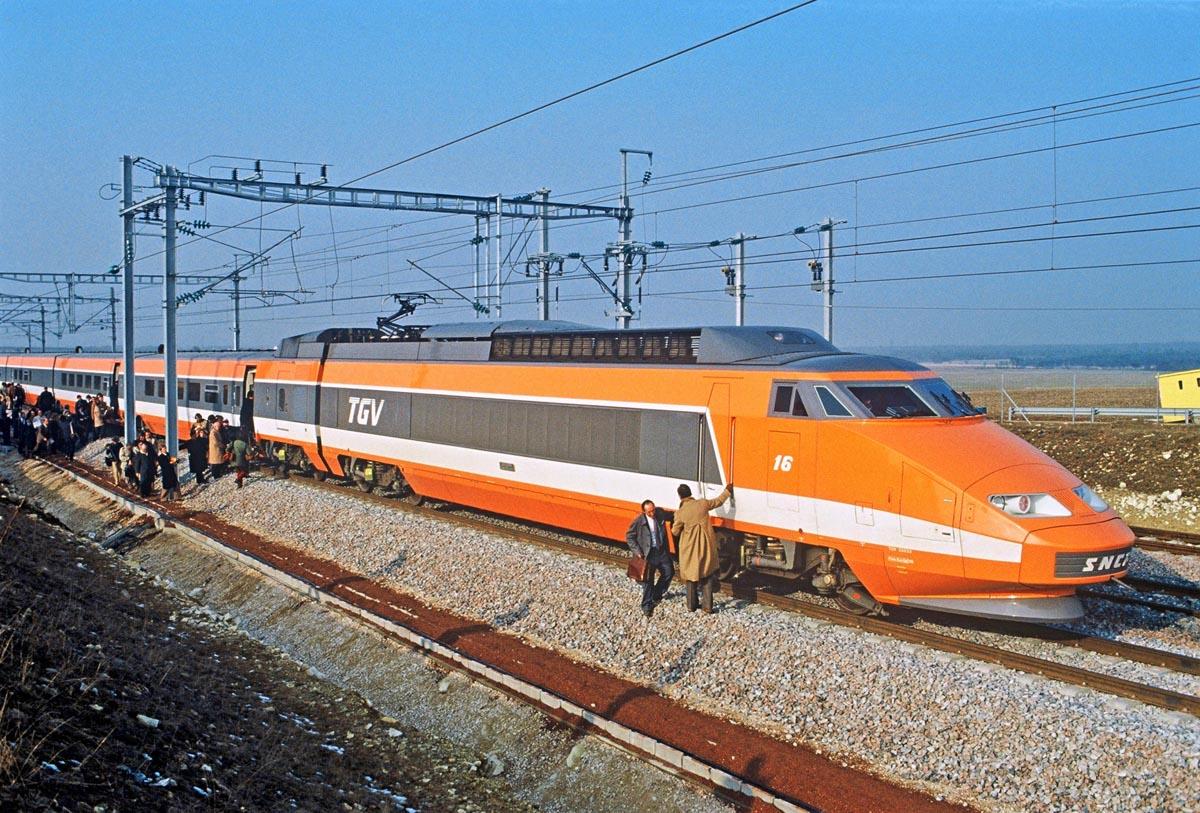High Speed trains were being introduced on the French rail network. But when you speak of “TGV” (Trains Grande Vitesse”) you are also speaking of “R&D” : Galland was constantly innovating in order to make material lighter and simpler.
1976-1978 : click on the switch
Before working on a catenary, you need to interrupt the flow of electricity. In order to facilitate this rather complicated action, Galland manufactured better molded and lighter large caliber section insulators. Philippe Galland remembers : “My grandfather always said : you must always think of the maintenance workers !”
1978 : a catenary for a cathedral
Some lines are equipped with very special catenaries. This is the case with the Bordeaux-Biarritz line that is a succession of bends. For this catenary called “southern catenary” which is not regulated by tensioning devices, Galland was obliged to rethink all the anchoring parts installed on the ogive poles. They are a characteristic of this regional line where the scent of pine trees and ocean spray is in the air.
1984 : as light as an aluminum arm
The TGV “A” (as in Atlantic) goes so quickly that it’s necessary to equip the line with a very light arm in order to avoid the pantograph rubbing against the catenary wire ! Galland rose to the challenge and that year created a mobile arm made of ultra-light aluminum.
1981 and 1990 : more records broken !
On 26 February 1981, the TGV travelling at 380 km/h broke the world record for speed on rail. In 1990, the 325 TGV Atlantic train took its place in history by reaching a speed of 515.3 km/h ! The catenaries of world records are made by … Galland.
1990-2000 The “performance” years
In 1990 the first underwater link-up between France and England took place : the tunnel under the English Channel became a reality. It was inaugurated in 1994. It was a crucial market for French companies. For Galland it was the beginning of a new period of “Research and Development” and a huge qualitative leap.

1988-1989-1990 : in the heart of the tunnel
In order to adapt them to the specific shape of the tunnel, Galland redesigned its tensioning devices, return pulleys, counterweights etc. It developed new models that could be installed parallel to the tunnel arch and flat, in order to take up the least possible space. This technology would later be used on the Bergen tramway (Norway) which also passes through a tunnel.
1990 : “the Channel tunnel” after effect
The Channel tunnel adventure made it possible for Galland to turn a corner that was crucial for its future : obtaining the ISO 9000 certification, that is, a set of standards in relation to quality management. Indeed, the professional exchanges with England obliged Galland to provide formal proof of the quality of its products, certificates of material, successful passing of tests, approvals…..all of which were written up in French and in English.
1992 : The beginning of the Chinese adventure
China placed an order for specific section insulators adapted to altitude and certain mountainous conditions. That’s when Galland developed the JG 1759. Over the next 20 years, the company has asserted its presence on the Chinese railway market. In 2016, Galland formalized the opening of a commercial entity located in Suhzou.
1992 : French trams roll again
In 1990, with the RATP, Galland developed an economical overhead contact line specially conceived for trams. Two years later, the tramway number 1 line (called the “the T1”) began running between Saint Denis and Bobigny. Galland was chosen to create the standard of the catenaries on the French tram network.
1994 : First LGV in China
Galland designed the section insulators and the anchoring parts with a specific steady arm for the move by the Chinese rail network to high speed trains. As a point of interest, an incident on the French TGV made the Chinese decide to call on Galland’s know-how : the train had derailed but had not fallen over. A gold star for our technology !
2000 : creation of Galland’s sales department
Galland’s know-how is demanded throughout the world. The company is on the list of suppliers of the Korean TGV (South Korea), the Taiwanese TGV, etc.


